| 1 | Up to 1 million in Florida and Georgia |
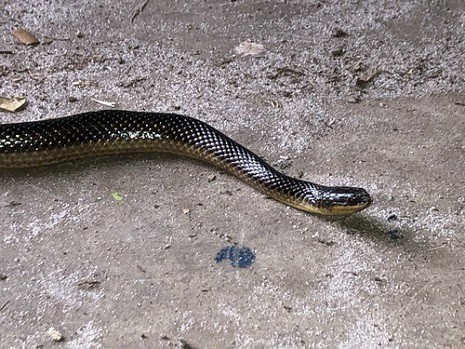
The wetlands of Florida are home to many creatures sinister and strange. Far from the neon lights of Disney World, you can find bonefish, critically endangered Florida panthers, and of course the American alligator. One of the lesser known members of this menagerie is the striped crayfish snake, also known as Liodytes alleni.
Few have heard of this near black snake, but in areas where it thrives it’s incredibly common, with up to 1300 per hectare. Its total global population is estimated at between 100,000 and a world conquering 1 million. This is a fundamentally water-loving snake, straying onto land only occasionally. It’s spotted crossing roads every now and then, usually scaring the bejeesus out of people who can’t distinguish it from killer snakes (pretty much everyone) and assume it’ll chase their car. But you’ll mainly find Liodytes alleni in sawgrass prairies, cypress swamps, marshes, and roadside ditches.
The range of this species includes the entirety of Florida except for the Western panhandle. For years, it was thought to be exclusive to the Sunshine state, until a handful of sightings manifested in the extreme south-east of Goergia.
| 2 | Shell-shattering fangs |
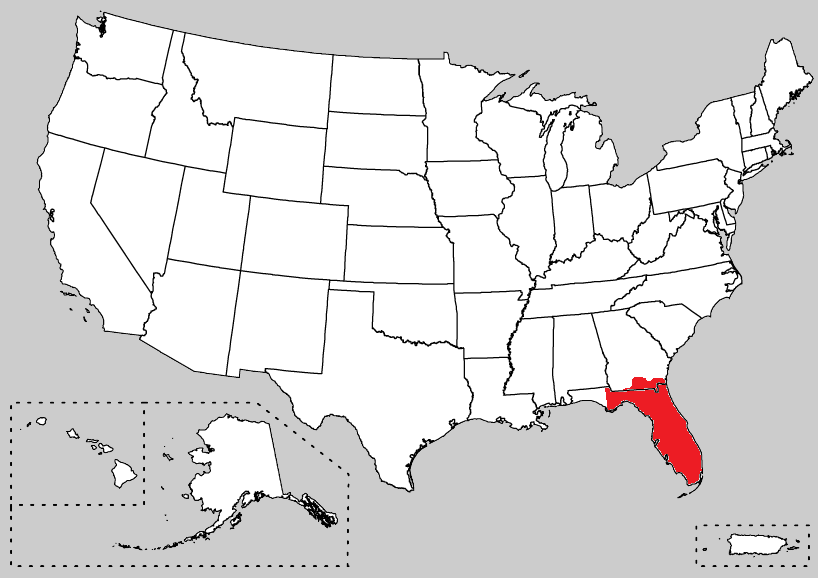
As the name suggests, the striped crayfish snake suffers from a crayfish addiction so strong that it’s spread to every fellow member of its species. The snake eats very little other than crustaceans such as the slough crayfish. Scientists have attempted to feed Liodytes alleni frogs and tadpoles in captivity, and they simply ignored them.
Liodytes alleni is part of the wider family of crayfish-eating snakes, but along with Liodytes rigida, its skull is specialised for hacking through the hardest crayfish shells. Its teeth are tiny and razor sharp in order to grip the shells, and the species eats crayfish from the back, so that the limbs are facing forwards and don’t damage the oesphagus.
Two similar species, Regina septemvittata and Regina grahami, have special chemosensing abilities to detect crayfish in the fresh stages of molt, so that their shells are soft and chewable. Liodytes alleni lacks this particular superower, but only because it doesn’t need it. Meanwhile, young members of the species eat dragonfly larvae instead, gathered from the side of their humid marsh abodes. Adults will sometimes eat shrimps, sirens and small fish as a backup, but crayfish make up almost all their calories.
| 3 | ID signs: black from afar |
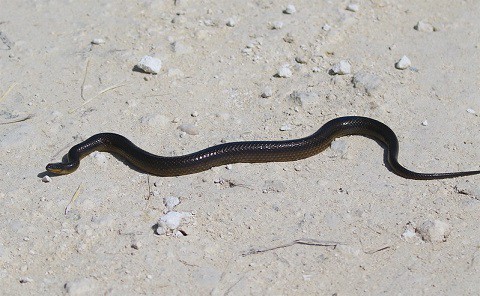
Liodytes alleni is a small snake which can disguise itself from predators easily, if its reaction times are fast enough. Its standard range is 30-55cm, and females are always longer than males. The longest female ever recorded was 70.5cm and the longest ever male was 60.6cm, although given that the species isn’t heavily studied, there’s no ruling out a 90cm supersnake somewhere.
Liodytes alleni has a thick body and its head is almost non-existent, being no thicker than the neck. From a distance, this snake looks like an oily black, but as you approach it seems to shimmer with faint green and blue hues. There are three inconspicuous stripes running down its body, and a bright yellow patch around its throat, which is the only real standout colour.
This isn’t a fantastically patterned snake, at least not at first glance. It looks similar to other crayfish-eating snakes, but there’s one difference which only the sensation of touch will reveal: smooth scales, compared to the keeled scales of the other 2 Liodytes members. The one exception is the area above the tail in males.
| 4 | The water hyacinth saga |
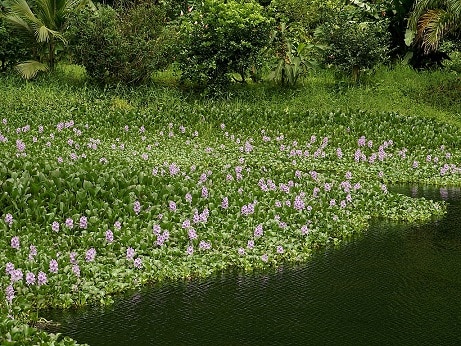
The most notorious invasive plant in Florida is surely the purple-flowered hyacinth. It was introduced to the lazy flowing St John’s river in the 1870s by a river-beautifying fanatic, but soon covered every inch of some waterways with dense, green matting vegetation.
The growth rate of hyacinth is explosive; it’s able to double its cover in two weeks by sending out countless small daughter runners. It originated in South America, and by the early 1900s it had taken over Florida’s rivers and caused a statewide crisis. The St John’s river used to be the main transport method for goods and cattle, but the hyacinth clogged the propellers of any boat that tried to force its way through. It also blocked out the sunlight and wiped out native plant species, provided a breeding ground for hungry mosquitoes, and dumped 500 tonnes of rotting plant material on the riverbed each year,
Amidst this, there was one native species that saw an opportunity (apart from the mosquitoes). The striped crayfish snake absolutely adores hyacinth as it’s a naturally shy species, and they can often be found taking shelter below the dense green matting.
Today, an intensive army program of herbicide-spraying has pushed the hyacinth back to just 4000 acres, but the waterways where it clings on are now some of the top Liodytes alenni spots in the state.
| 5 | Uses hyacinth as a shield |
This species has plenty of predators, including other snakes that terrorise Florida. The 1 metre long eastern king snake is known to eat Liodytes alleni, as is the 1 metre long southern black racer.
Another arch enemy is the southern black racer, which is 76-122cm long and semi-aquatic just likes its prey. Each of these snakes is larger than the 30-55cm long striped crayfish snake, and this size alone puts them higher on the food chain. Among birds, they fall victim to great egrets and great blue herons. The hyacinths are a massive protection, as these birds struggle to hunt in them, with their claws getting tangled in the thick green weeds.
Then there’s the north American river otter. This is the common otter, which inhabits southern Canada, the northern half of the USA, and the east coast stretching southwards to Florida. It’s a dietary generalist which eats anything that strays into its river domain (except mammals), and doesn’t have a particular obsession with snake, but isn’t averse to eating striped crayfish snakes when they show up.
| 6 | Heron-dodging tactics |
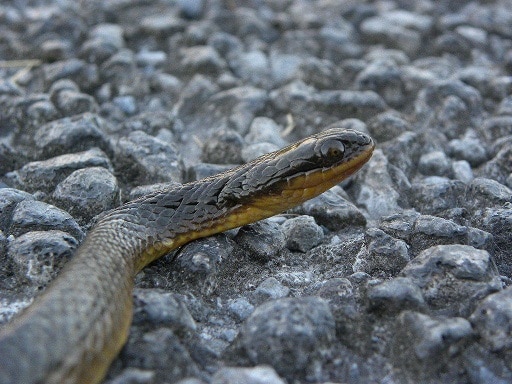
The striped crayfish snake isn’t just a water-dwelling snake, but an underwater snake. It often submerges for long periods on “exploratory” missions, before surfacing again in its hyacinth domains in order to bask in the sun, between the thick greenery. When dodging predators, they submerge just below the surface and position themselves amidst the long hanging hyacinth roots. The most cautious members of the species take shelter behind rocks resting on the riverbed, taking no chances in case the keen eyes of a heron do their job.
Striped crayfish snakes have some interesting anti-predator displays. They’ve been seen curling their bodies up and hiding their heads in their coils, and they regularly use basic intimidation displays such as gaping their mouths and swaying their backs around widely, despite having no venom to back it up with.
In one report, a striped crayfish snake saw an eastern black racer approaching and curled its body around a twig, in order to blend in using its dark scales. The plan failed, as the snake soon became racer food, but it shows the flexibility this species has in its watery domains.
| 7 | Crayfish are wary of them |
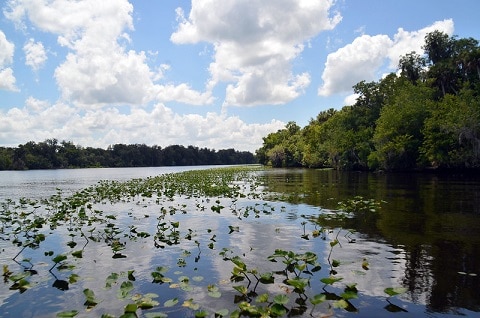
Unfortunately for Liodytes alleni, its crayfish prey don’t simply roll over and accept their fate either. Scientist have found that when a slough crayfish (Procambarus fallax) sees a striped crayfish snake approach, it immediately ceases all movement. Its antennal, maxillipedal, swimmeret and leg movements grind to a complete halt. This usually succeeds, as the hunting snakes typically moved closer to the crayfish but didn’t seize them in their coils. A couple of times, the snake stopped right next to the crayfish, as though suspicious and picking up hints with its tongue, but unable to pinpoint the exact location.
Compared to the myth that bears have poor eyesight, snakes really do have terrible eyesight, which is why they’re so reliant on olfactory sensing with their tongues. Other crayfish reacted to the snake’s approaches by making vertical leaps of 7-8cm.
Interestingly, the slough crayfish only performed these defensive manoeuvres when confronted by Liodytes alleni. Banded water snakes and black swamp snakes didn’t trigger any response, proving that the two species have co-existed and evolved around each other for hundreds of thousands of years at least.
| 8 | Underwater ambush tactics |
With neither venom nor constricting powers, the striped crayfish venom relies on pure skill to hunt. It relies on ambush tactics, waiting behind rocks or amidst weeds in its slow-flowing river habitat. It waits for a crayfish to approach, at which point its tongue starts flicking intensely, detecting the scent of its prey. Sometimes they’ll drop down with their tail attached securely to a hyacinth, but other times, they’ll find the crayfish to be out of reach, and lunge towards it, swimming at top speed with no attempt at disguise.
Its first contact is a bite between the crayfish’s hard carapace and abdomen, essentially the centre of its body. Step 2 is coiling 1.5 to 2 whole body lengths around its prey. Once secure, the snake moves its mouth to the urupod and telson (the crayfish’s “tail”). Finally, the snake begins to devour the crayfish from the back first, but only releases the tight secure coils once its mouth has reached the cervical suture just below its head.
Scientists timed two hunting sessions in a study, and found that from initial attack to the crayfish being fully consumed, the process took 4 minutes 34 seconds. A second attack took 4 minutes 16s.
| 9 | How crayfish defend their burrows |
The best time to spot a striped crayfish snake is during the day, as that’s when they perform most of their hunting, with the exception of the cold days of winter when they become nocturnal.
In 1977, scientists studying the 11.8 mile Rainey Slough stream estimated that the local striped crayfish snakes probably ate 9.6% of the local crayfish adults each year. They also discovered that the local crayfish would plug their burrows whenever the water table dropped, probably to stop the snakes from giving chase after them. While floating hyacinth mats are normally enough, striped crayfish snakes are known to take shelter in crayfish burrows. The scientists also found that in Rainy Slough, the crayfish numbers fell 2.5 fold in winter, which resulted in the snakes eating 5 fold less food.
Another trick of Liodytes alleni is seeking out less calcified waters with lower PHs, which prevents the development of overly thick crayfish shells. Everglade explorers have nothing to fear, as Liodytes alleni has never been recorded biting a human, which is probably identical for birds or larger snakes. Instead, they rely on a foul musky odour which they release.
| 10 | Found in ancient fossil beds |
The battle between crayfish and their snake nemesis has probably been raging for millions of years. Fossil Liodytes alleni have been unearthed from the Irvingtonian age in Hillsborough County, Florida, which lasted between 1.9 million and 250,000 years ago. More recent fossils have been found in St Lucie County, Florida, dating to either the Pleistocene or the Holocene (our current geological epoch). The Liodytes family includes just three snakes, compared to 32-45 for the crotalus rattlesnake family. The other two members are the black swamp snake (Liodytes pygaea) and the glossy crayfish snake (Liodytes rigida), with the latter having the same tiny brutal teeth for gripping the hardest crayfish shells.
Beginning in 1983, a seismic shift took place when the Liodytes was ripped from its original family of regina. They were originally grouped alongside the other two crayfish eating snakes, the queen snake (regina septemvittata) and Graham’s crayfish snake (regina grahamii), but differences in the dorsal scale patterns led to a final separation, into two closely related but separate families.
Our current snake is actually the most isolated on the evolutionary tree, having been secluded in its lazy Florida niche for a while. Its unique smooth scales are one example of this.
